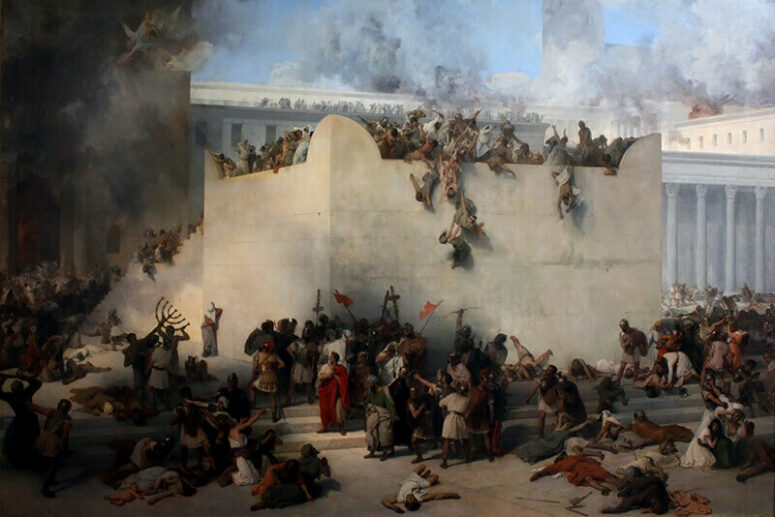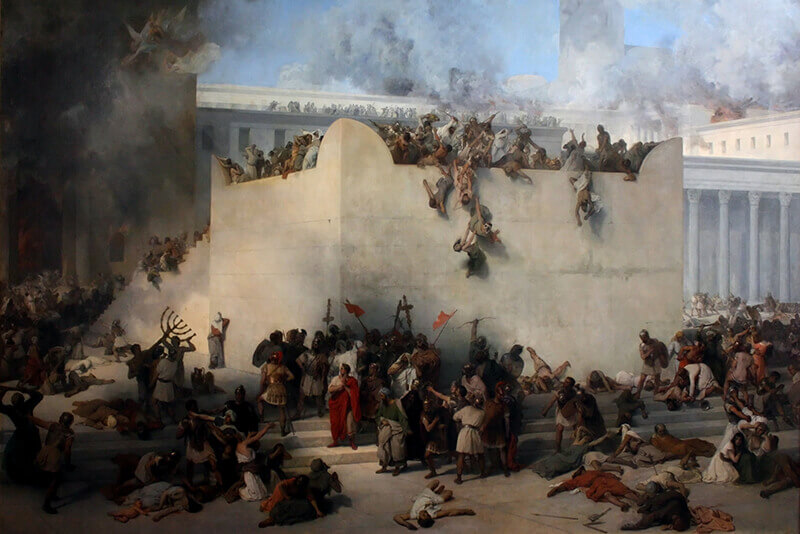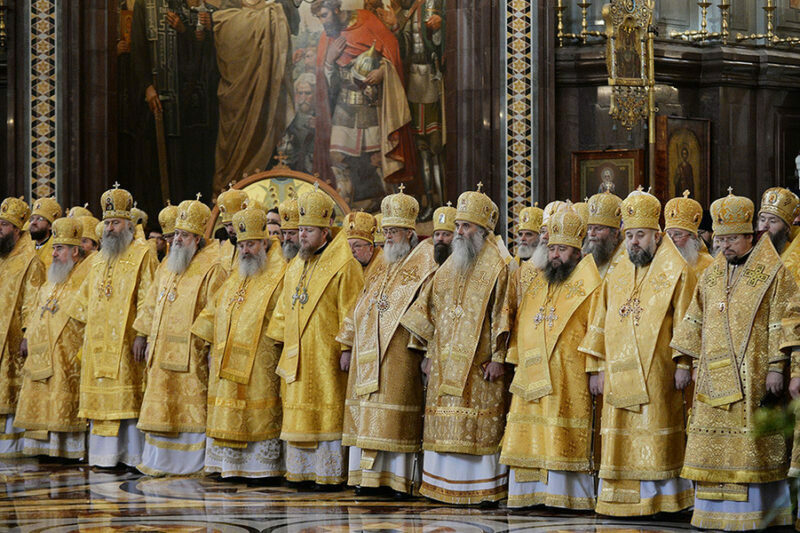
One of the charges levelled against Christ at the Court of the Sanhedrin concerned the Jerusalem Temple. Several witnesses there alleged that Christ was making plans to destroy the main temple of Jerusalem, no more, no less. “We heard him say,” they said -‘” ‘I will destroy this temple made with human hands and in three days will build another, not made with hands.’ ” (Mark 14:58).
The charge was serious enough. Yet, even the biased court of the first priests who desired Christ’s death did not consider the evidence strong enough to justify the death penalty. Why? Did the judges really find the accusation of plotting a crime such as this too mild for the preacher from Galilee? Imagine how impressive the verdict might have been and how spectacular the appearance of Christ before the crowd convicted of this evil doing. How nice it would have been to tell the crowd: “Look! This villain was plotting to destroy our greatest treasure, the Temple of Jerusalem, and for this heinous crime, we condemn him to death!”
The reason for dropping this grave charge is simple enough, although not fully evident, especially to the people of the present day, who have a very vague idea about the Temple of Jerusalem in Biblical times. After renovation during the reign of King Herod the Great, the temple was a massive building. Its splendour and beauty was unrivalled throughout the Middle East. Its most impressive detail was the platform of fourteen hectares (the size of about 12 football fields), part of which has survived to our time. To make space for it, Kind Herod had man-made terraces built around the top of Temple Hill. The southern end of the platform, reinforced by huge slabs of marble, rose almost vertically to a height of almost 40 metres above the ground. Overall, the temple building was almost twice the size of the well-known Trajan Forum in Rome.
By charging Christ with preparing to destroy this gigantic structure, the judges would have fallen into the trap that they would have themselves prepared. If Jesus was truly a travelling preacher, this charge would have looked absurd, for how could one seriously believe that one man could destroy a massive building that hundreds of thousands had been building for many decades. Yet, if He were the Messiah capable of working miracles by the grace of God, then how could the people of Israel put on trial their Saviour? So the charge was found unsubstantiated, even more so that it rested on the testimony of the people whom the Gospel directly called liars: The chief priests and the whole Sanhedrin were looking for false evidence against Jesus so that they could put him to death. But they did not find any, though many false witnesses came forward. Finally, two came forward and declared, “This fellow said, ‘I am able to destroy the temple of God and rebuild it in three days.’ ” (Matthew 26: 59 – 61) So where was the lie? Why had not the liars invented a more plausible story? Why had they ascribed to Christ such absurd statements? Two millennia later, one expert in lies and propaganda said, “the more massive the lie, the more easily it will be believed.” But in Christ’s case, the lie was not about the fact, but the details. Two years earlier, the Saviour had indeed said something similar in the Temple of Jerusalem: “Destroy this temple, and I will raise it again in three days” (John 2: 19), but he was not referring to the Temple, but His own body, predicting His death on the Cross and resurrection. They replied, “It has taken forty-six years to build this temple, and you are going to raise it in three days?” But the temple he had spoken of was his body. After he was raised from the dead, his disciples recalled what he had said. Then they believed the scripture and the words that Jesus had spoken (John 2: 19 – 21). The witnesses lied by distorting and misrepresenting the meaning of Christ’s words. Christ did not say “I can destroy this temple”. He said, “destroy the temple”. He did not say “I will rebuild it”, he said, “I will raise it”. These distortions changed the meaning of Christ’s words in substance. Overall, the charge made little sense and could qualify as an insult to the temple at worst, and even then it could not be serious enough to carry the sentence of death.
However, around that time, Jesus left the temple and was walking away when his disciples came up to him to call his attention to its buildings. “Do you see all these things?” he asked. “Truly I tell you, not one stone here will be left on another; every one will be thrown down.” (Matthew 24: 1-2). These statements could have added substance to the accusations, but only His disciples heard them, and the false witnesses could not cite them in court. Without a doubt, Christ never had any plans to destroy the temple. As the Incarnate God, he foresaw the tragic future of this temple that was razed to the ground decades later when the Roman armies suppressed the Jerusalem uprising. He had nothing but pity for the people who could not acknowledge their Saviour and thus doomed themselves to their imminent death. “Jerusalem, Jerusalem, you who kill the prophets and stone those sent to you, how often I have longed to gather your children together, as a hen gathers her chicks under her wings, and you were not willing. Look, your house is left to you desolate.
Translated by The Catalogue of Good Deeds
Source: https://foma.ru/kto-razrushil-ierusalimskij-xram.html




